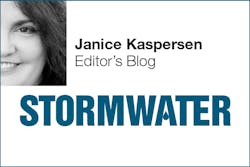Just over a year ago, I wrote about the algae blooms that were driving residents away from some sections of Florida’s Atlantic coast. They’re back. And what was once considered an unusual situation could become a permanent summer ritual. “Could the situation that occurred last summer be the new normal? Absolutely,” the executive director of the Florida Oceanographic Society, Mark Perry, says in this article.
The situation is hurting the state’s $109 billion a year tourist industry, and there are potentially more serious consequences as well. The blue-green algae—technically cyanobacteria—that’s invading the beaches and waterways is killing marine life. The article reports that in the St. Lucie estuary, about half the sea grass, which is a food source for many marine animals, died off during last year’s algae blooms. Among humans who’ve been exposed to the algae, there has been an increase in antibiotic-resistant staph infections. Florida’s governor has declared a state of emergency in four counties.
The phosphorus and nitrogen that fuel the algae blooms have several sources, but most agree that the main one is the release of nutrient-laden water from Lake Okeechobee, which receives runoff from agricultural lands. A total maximum daily load (TMDL) for phosphorus was established for the lake in 2001, but in some years, the lake still receives more than four times its targeted phosphorus level. This New York Times article, written during last year’s event, explains in detail the reasons the Army Corps of Engineers must release water from the lake to relieve pressure on an aging dike system, and it also covers some of the debate over who’s to blame; state and federal officials tend to blame each other.
The state has in the past considered purchasing agricultural land south of the lake to serve as a reservoir for some of the water that’s being released, and a similar proposal is once again on the table. Three months ago, the Florida legislature approved a bill that includes plans to capture and treat the discharges and to send that water into the Everglades. However, although the federal government had previously agreed to pay half of the approximately $2 billion cost for such a project, locals are concerned that the funding may no longer be forthcoming under the new administration.
In the meantime, water from Lake Okeechobee will continue to be released to the estuary systems—more following strong El Niño seasons.About the Author
Janice Kaspersen
Janice Kaspersen is the editor of Erosion Control and Stormwater magazines. She works with experts throughout the erosion and sediment control industry and the stormwater industry to produce articles relevant to professionals working in both of these fields. Topics covered regularly in the magazines include best management practices for erosion control and stormwater management; green infrastructure, such as bioswales, rain gardens, pervious pavement, and rainwater harvesting systems, as a supplement to traditional “gray” infrastructure; stormwater management and erosion and sediment control techniques for construction sites; urban retrofit and redevelopment; and the many evolving Clean Water Act regulations. She has researched and written articles on topics ranging from coastal erosion to stormwater program funding.
Janice also puts together the speaker program portion of Forester Media’s StormCon, the North American Surface Water Quality Conference and Exposition, which is in its fourteenth year. The annual StormCon conference brings together surface water professionals, engineers, municipal program managers, researchers, regulators, and others concerned with water quality. Conference program tracks include Best Management Practices, Green Infrastructure, Stormwater Program Management, Water-Quality Monitoring, Advanced Research, and Industrial Stormwater Management.
Before joining Forester Media, Janice worked as a technical writer and editor for a government research laboratory. She has a degree in English and anthropology from the University of Arizona. She holds a certification from the Board of Editors in the Life Sciences.

